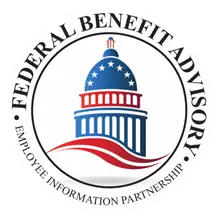As a Federal Government employee, the Federal Employees’ Group Life Insurance (FEGLI) program is an option for familial security during retirement. If you’re enrolled in FEGLI, however, you should get prepared for the new premium insurance rate increase.
This increase goes into effect the first pay period after October 1st, 2021, so you’re likely stuck with many questions and not much time to get them answered.
For example, which plans does the FEGLI rate increase affect? Why were the rates increased? And what does it mean for you?
This article answers all those and any other important questions regarding the FEGLI rate increase. In fact, here’s what you need to know:
Why Did The FEGLI Program Rates Increase?
There are many reasons why general health insurance rates may increase over time, such as inflation, new information, or changes to plan coverage options. This increase to the FEGLI Program, however, stems from recent research based on the analysis of those who are a part of the FELGI group.
This is because, unlike other insurance programs, factors that affect the mass population do not generally affect the FELGI rate increases or decreases since it is a program only offered to federal employees. Instead, the rates in the FEGLI Program reflect the estimated costs of future claimant expenses.
Additionally, OPM (the Office of Personnel Management) recently completed an Annual Rate Review study designed to analyze the funding and claims experience of FELGI participants. During this review, a decision was made to more accurately reflect the needs and costs of benefits provided by the FELGI Program to its beneficiaries.
From this decision, changes were made to the Employee Basic and Post-Retirement Basic rate premiums and the Option A, Option B, and Option C rate premiums.
It’s important to note that each level of coverage in the FELGI Program stands independently, separate from the other options. This allows each class to more accurately reflect its own needs and expenses. It also ensures each coverage option is still able to sufficiently support the claimants.
With this in mind, you can rest assured that each level of coverage is studied and analyzed to find what best benefits you.
Which Plans Does The FEGLI Rate Increase Affect?
Some FEGLI Program rates were increased beginning in October, on the first pay period afterward, while other coverage selections were decreased. Specifically, rates for Basic coverage are increasing, as well as some of the Optional insurance premiums.
On September 9th, 2021, OPM gave notice that a FEGLI Program rate change would begin on October 1st. If your last pay period was before October 1st, 2021, the rate change hadn’t affected your payment yet. However, any pay period following October 1st will reflect the updated changes.
Are the rates across all FEGLI coverage plans increasing?
In short, no. The rates didn’t increase across all plans of coverage. In most cases, for coverage with Optional insurance (Option A, Option B, and Option C), the premiums will decrease. However, the older age bands of Options B and C have increased.
What does it mean for me?
If you are already enrolled in coverage, you can find out how your rate changes have been affected in the list below and should expect to see changes on your next pay period after October 1st.
If you are not yet enrolled, this change will affect the rates with which you will be registered when or if you choose to partake in coverage in the future.
How Did Premiums Change For Employee Basic and Post-Retirement Basic Plans?
For both Employee Basic and Post-Retirement Basic insurance plans, the government contributes one-third of the premium coverage cost, and the employee or retiree pays the other two-thirds.
As of October 1st, 2021, however, the rate premiums have increased for both the Employee Basic and Post-Retirement Basic plans.
For employees enrolled in the Employee Basic plan, the biweekly premium per $1,000 of coverage increased from $0.15 to $0.16, and the government biweekly contribution increased to $0.08.
For those who elected monthly contributions, the employee rates per $1,000 of coverage increased to $0.3467, and the monthly government contribution increased to $0.1733.
For federal retirees enrolled in the Post-Retirement Basic plan, the monthly premium per $1,000 of coverage is increasing to $0.3467. However, some retirees have a monthly withholding rate of $0.325 per $1,000, depending on their age and whether they have elected to be an annuitant or compensationer.
What Optional Coverage Rates Changed And How?
Optional insurance coverage is fully paid by the employee or retiree. The government does not pay anything towards Optional coverage.
Take a look at the categories below to find your Optional coverage and discover how you are affected by this change. The rates that have increased have been bolded for clarity. The items that aren’t bolded have either decreased or stayed the same.
Option: Standard
Biweekly premiums for Option-A Standard after October 1st are now as follows:
- Under age 35: $0.20 (remained the same)
- 35 – 39: $0.20 (decreased from $0.30)
- 40 – 44: $0.30 (decreased from $0.40)
- 45 – 49: $0.60 (decreased from $0.70)
- 50 – 54: $1.00 (decreased from $1.10)
- 55 – 59: $1.80 (decreased from $2.00)
- 60 and above: $6.00 (remained the same)
Monthly premiums for Option-A Standard after October 1st are now:
- Under age 35: $0.43 (remained the same)
- 35 – 39: $0.43 (decreased from $0.65)
- 40 – 44: $0.65 (decreased from $0.87)
- 45 – 49: $1.30 (decreased from $1.52)
- 50 – 54: $2.17 (decreased from $2.38)
- 55 – 59: $3.90 (decreased from $4.33)
- 60 and above: $13.00 (remained the same)
Option B: Additional
Biweekly premiums for Option B-Additional after October 1st are now:
- Under age 35: $0.02 (remained the same)
- 35 – 39: $0.02 (decreased from $0.03)
- 40 – 44: $0.03 (decreased from $0.04)
- 45 – 49: $0.06 (decreased from $0.07)
- 50 – 54: $0.10 (decreased from $0.11)
- 55 – 59: $0.18 (decreased from $0.20)
- 60 – 64: $0.40 (decreased from $0.44)
- 65 – 69: $0.48 (decreased from $0.54)
- 70 – 74: $0.86 (decreased from $0.96)
- 75 – 79: $1.80 (remained the same)
- 80 and above: $2.88 (increased from $2.64)
Monthly premiums for Option B-Additional after October 1st are now:
- Under age 35: $0.043 (remained the same)
- 35 – 39: $0.043 (decreased from $0.065)
- 40 – 44: $0.065 (decreased from $0.087)
- 45 – 49: $0.130 (decreased from $0.152)
- 50 – 54: $0.217 (decreased from $0.238)
- 55 – 59: $0.390 (decreased from $0.433)
- 60 – 64: $0.867 (decreased from $0.953)
- 65 – 69: $1.040 (decreased from $1.170)
- 70 – 74: $1.863 (decreased from $2.080)
- 75 – 79: $3.900 (remained the same)
- 80 and above: $6.240 (increased from $5.72)
Option C: Family
Biweekly premiums for Option C-Family after October 1st are now:
- Under age 35: $0.20 (decreased from $0.22)
- 35 – 39: $0.24 (decreased from $0.27)
- 40 – 44: $0.37 (decreased from $0.41)
- 45 – 49: $0.53 (decreased from $0.59)
- 50 – 54: $0.83 (decreased from $0.92)
- 55 – 59: $1.33 (decreased from $1.48)
- 60 – 64: $2.43 (decreased from $2.70)
- 65 – 69: $2.83 (decreased from $3.14)
- 70 – 74: $3.83 (remained the same)
- 75 – 79: $5.76 (increased from $5.26)
- 80 and above: $7.80 (increased from $7.20)
Monthly premiums for Option C-Family are now:
- Under age 35: $0.43 (decreased from $0.48)
- 35 – 39: $0.52 (decreased from $0.59)
- 40 – 44: $0.80 (decreased from $0.89)
- 45 – 49: $1.15 (decreased from $1.28)
- 50 – 54: $1.80 (decreased from $1.99)
- 55 – 59: $2.88 (decreased from $3.21)
- 60 – 64: $5.27 (decreased from $5.85)
- 65 – 69: $6.13 (decreased from $6.80)
- 70 – 74: $8.30 (remained the same)
- 75 – 79: $12.48 (increased from $11.40)
- 80 and above: $16.90 (increased from $15.60)
These rate comparisons have been sourced from the official notice from the Office of Personnel Management (OPM), with the help of the Government Executive website.
How Does This Affect Enrollment?
As of right now, there has been no update on when insurance enrollment will open again since OPM decides when to schedule an available enrollment period. It’s been a pattern in the past for OPM to hold open enrollment during the new rate updates or changes, but that hasn’t happened this time around.
However, if you want to make changes to your already existing coverage, you can do so at any time. You can choose to simply reduce your coverage or cancel it altogether if you wish to do so.
Conclusion
At first glance, changes to programs that you’re enrolled in can be frightening, especially if you don’t know all the details. However, thanks to this article, you should be up to speed on the new FEGLI rate increases and decreases.
If you’d like to get more information about how this update affects you, we recommend you connect with a dedicated retirement planner who can help you throughout the whole retirement process.
At the Federal Benefit Advisory, our planners are experts in federal retirement, and their sole purpose is to help you retire comfortably and securely. Reach out today to get started with your federal retirement.


